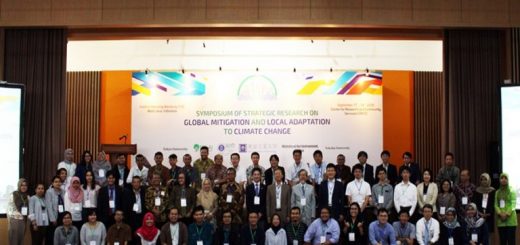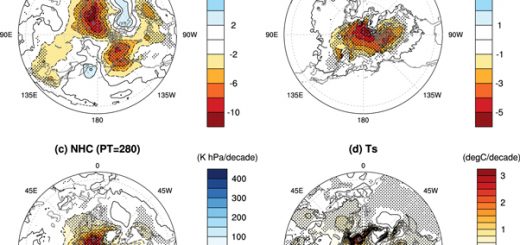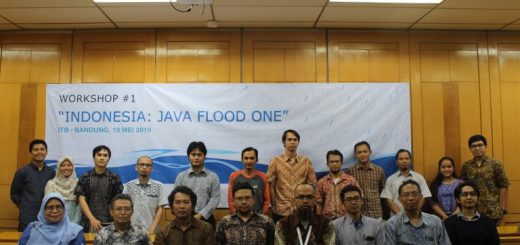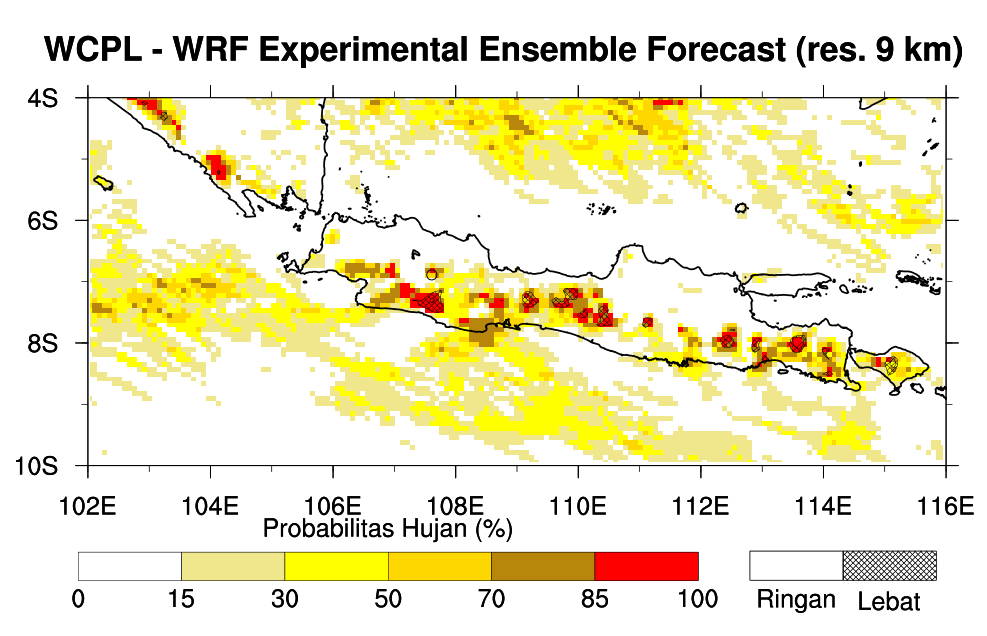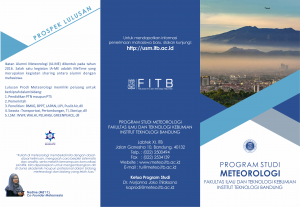Contributing Factors to Spatio-Temporal Variations of Outgoing Longwave Radiation (OLR) in the Tropics
Outgoing longwave radiation (OLR) sering digunakan sebagai proxy (variabel pengganti) untuk indikator aktivitas awan konvektif. OLR di permukaan bumi sangat bervariasi secara spasial dan temporal yang dapat dipengaruhi oleh berbagai faktor. Penelitian terbaru dari Bapak Faiz R. Fajary dan Bapak Tri W. Hadi yang diterbitkan di Journal of Climate mengidentifikasi beberapa faktor yang mempengaruhi OLR tersebut. Mereka menemukan bahwa variabilitas OLR dipengaruhi paling dominan oleh fenomena Madden-Julian Oscillation dan El Nino Southern Oscillation.
Referensi:
Fajary, F. R., T. W. Hadi, S. Yoden, 2019, Contributing Factors to Spatio-Temporal Variations of Outgoing Longwave Radiation (OLR) in the Tropics. Journal of Climate. Early Online Release. doi:10.1175/JCLI-D-18-0350.1. https://journals.ametsoc.org/doi/abs/10.1175/JCLI-D-18-0350.1
Abstract. Factors governing spatio-temporal variations of daily outgoing longwave radiation (OLR) dataset are studied using 35-year (1979–2013) data records by employing multiple linear regression, wavelet transforms, and band-pass filtering methods. From the regression coefficients of nine predictors and the explained variances, we found that the largest contributions to OLR data variability are associated with the Madden-Julian Oscillation and the El Niño–Southern Oscillation (ENSO). The ENSO signatures on OLR show dipole patterns over the Maritime Continent (MC) and Pacific regions. The significant factor of the Indian Ocean dipole is confined to the Indian Ocean and Africa. Furthermore, the solar cycle and stratospheric aerosols show mainly negative correlations, while positive linear trend is observed mainly in the northern hemisphere. Contributions from the stratospheric quasi-biennial oscillation (QBO) are the least significant contributor to OLR. Time-longitude variations of the annual cycle (AC) show pairs of contrasting phases that characterize monsoon systems, in which the MC-Pacific regions are found to be in the same phase group. Most consistent AC signals are found to correspond with North and South American monsoons that respectively exhibit weakening and strengthening trends. Wavelet spectra and filtered OLR signals in the QBO and ENSO frequency bands show an interdependent relationship with large longitudinal dependence.


